August 4th, 2014 was the last day of my trek, with about 10 miles to go that day. The smoke had cleared some, probably because I had hiked past the route of the smoke as it drifted from the fire site, but it was still slightly hazy.
Leaving Bobby Lake at about 7:15am, I figured that even if I drug my feet, I ought to make the end by noon. I didn’t expect to see much, since views were so limited among the trees. The exception was the ski hut I kept hearing about. On several occasions, people I met going the opposite direction had told me that there was a ‘secret’ ski shelter in the wilderness south of Bobby Lake, giving the impression that if the Forest Service knew about it, it would most certainly be torn down. I had a general idea of where it was and I intended to try to find it. It turns out much of what I was told was wrong, but I’ll get to that later.
The first part of my day was rather dull, so I kept myself occupied by looking at the blaze marks I saw on trees every 40′ or so. Here is a great example of a blaze that has completely scarred over. You can see the two cuts clearly anyway, small cut on top and long vertical cut underneath:
On this one, you can see that the bark between the two sections has fallen away. Without anything feeding the cambium layer in the spot between the two cuts this is actually a pretty common outcome. You can still see that it was originally two separate cuts though:
This was originally a wooden diamond-shaped marker, but half of it is missing. You can see the nail by itself below what is left as well as the ‘shadow’ left by the missing bit. There was no trace of writing or other markings left on the wood:
This hemlock died before the blaze healed over, and as is common with these trees, the bark has already sloughed off leaving only the dead wood underneath. You can clearly see that the tree attempted to heal itself. You can also see that the lower cut prevented the upper cut from healing as well as it might have. With the cambium cut away below the upper mark (by the lower), the tree would have had trouble getting the necessary nutrients to that area to affect a repair, whereas the lower cut has undamaged cambium below it to supply everything needed. Lastly, look at the left edge of the upper section – you can still see the axe or hatchet cuts that penetrated all the way through the bark and live cambium layer to the dead wood underneath. The tree can fill that in with cambium and bark, but the wood itself is dead, and can’t truly heal those cuts:
On this tree the two cuts of the blaze are very clearly separated, and the tree has managed to heal over the damage. This is a common result:
Here is another instance where the section between the cuts died and the bark fell away leaving one long cut instead. You might notice that the tree is visibly larger in diameter at and below the blaze than it is above. I suspect that this is the outcome of a young tree reinforcing itself after the damage was done. The effect was more dramatic in person:
I just couldn’t stop myself from taking a picture of the lush moss hanging in this hemlock, much like what I saw in the trees everywhere I looked in this area:
A PCT sign. Ones like this one are rare, as they now put signs like this on posts, and they rarely mention the PCT. This one is clearly falling apart, but you can still make out that Bobby Lake was 2 miles behind me and the Rosary Lakes were 3 miles ahead:
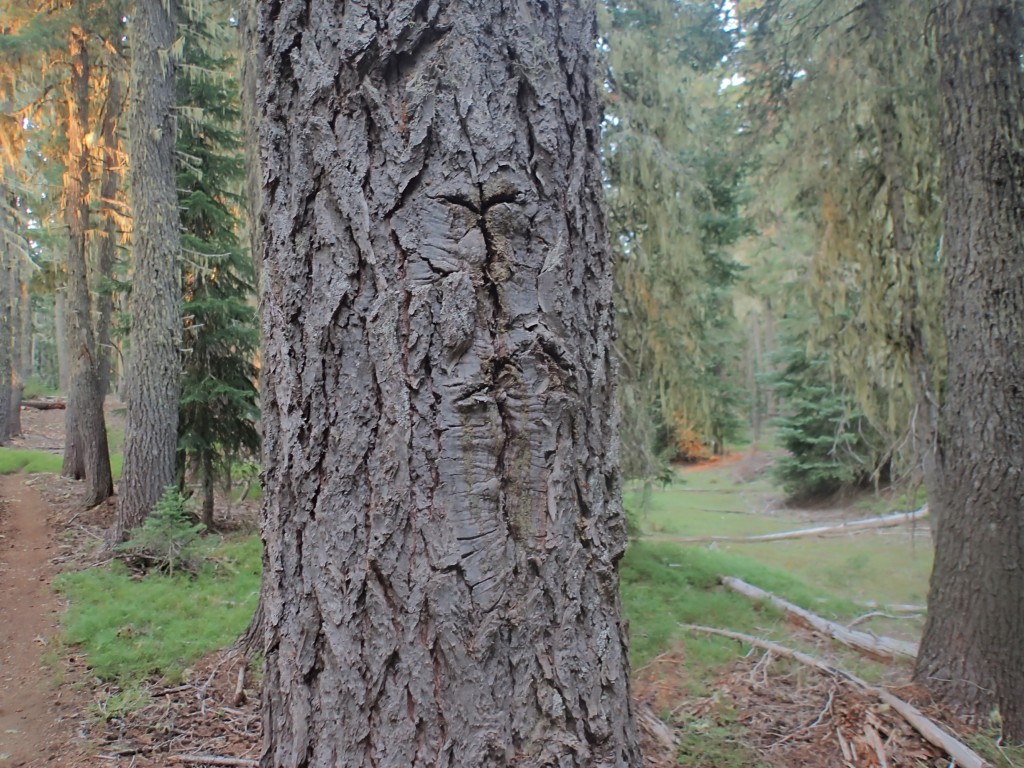
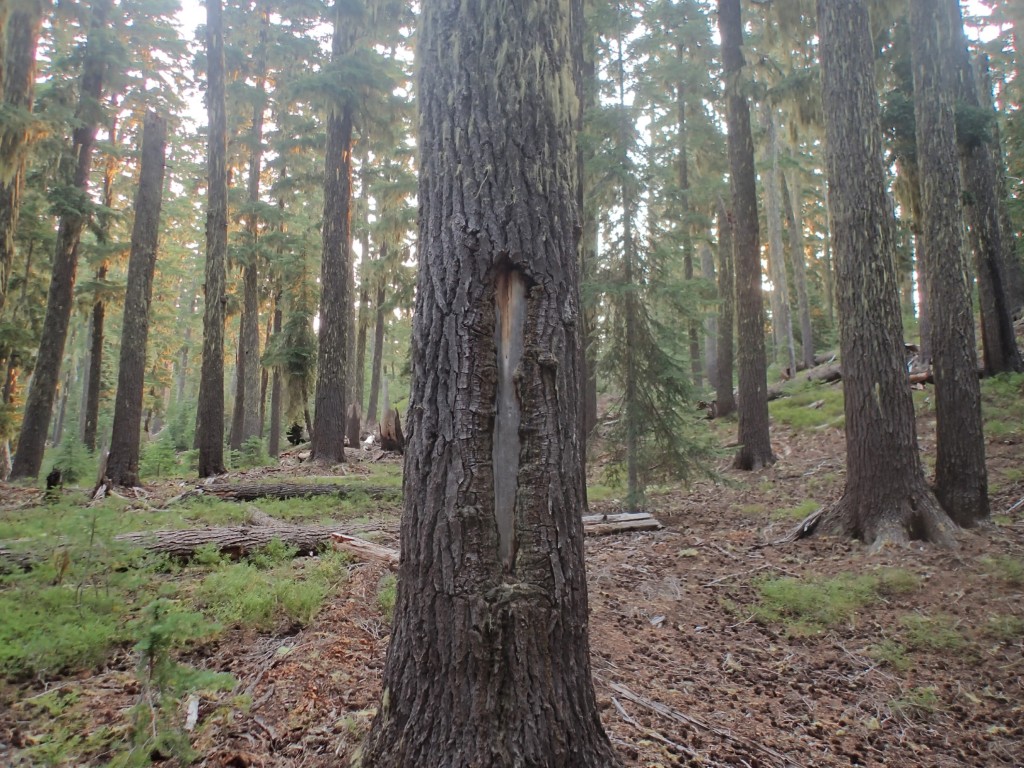
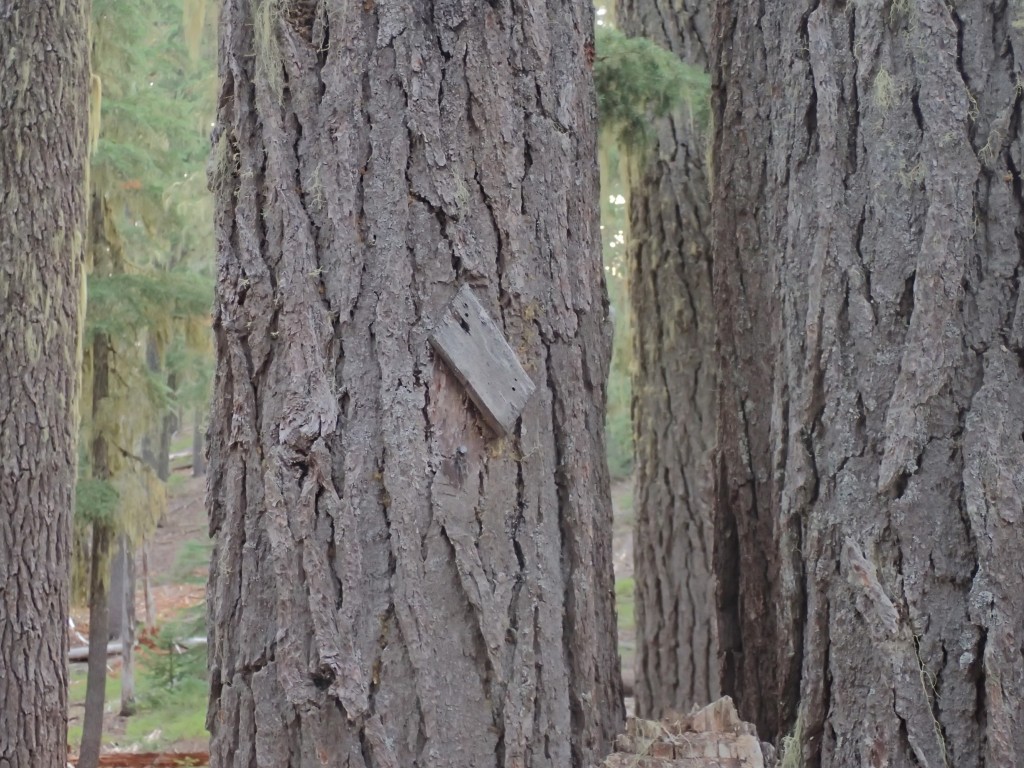

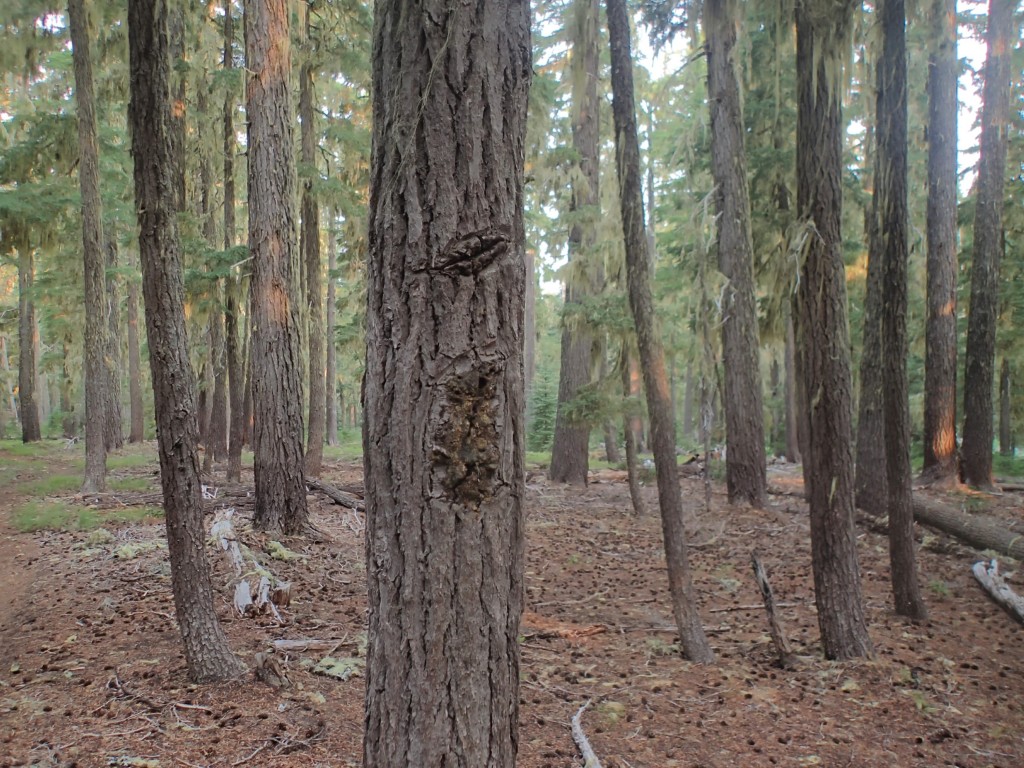
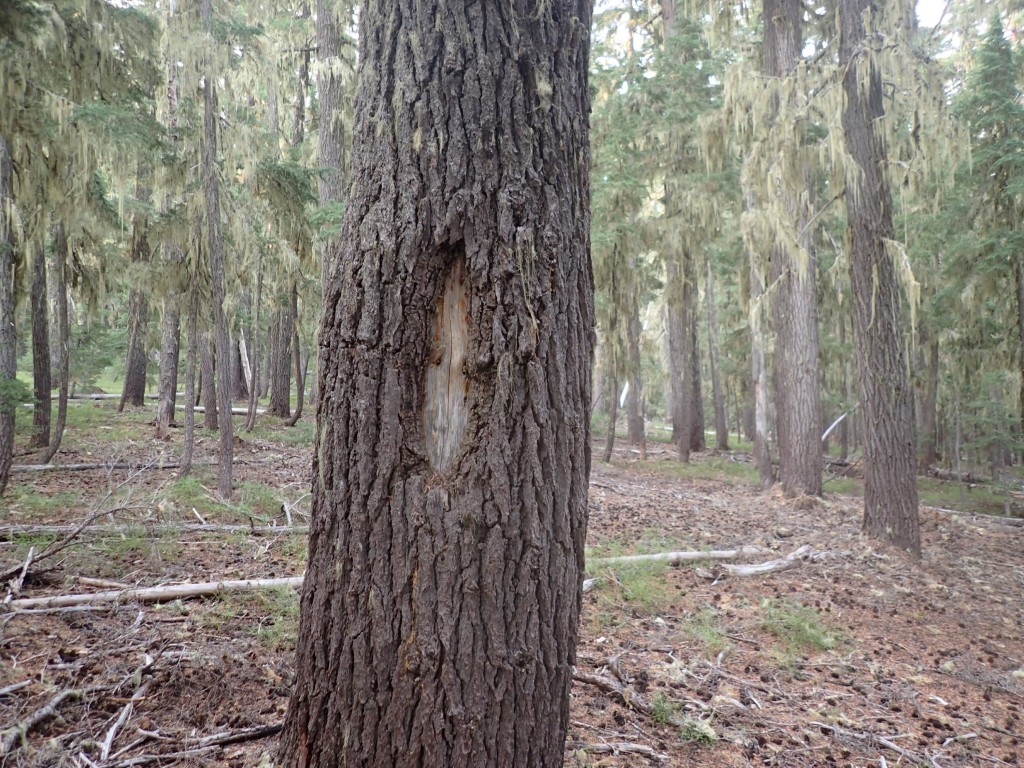
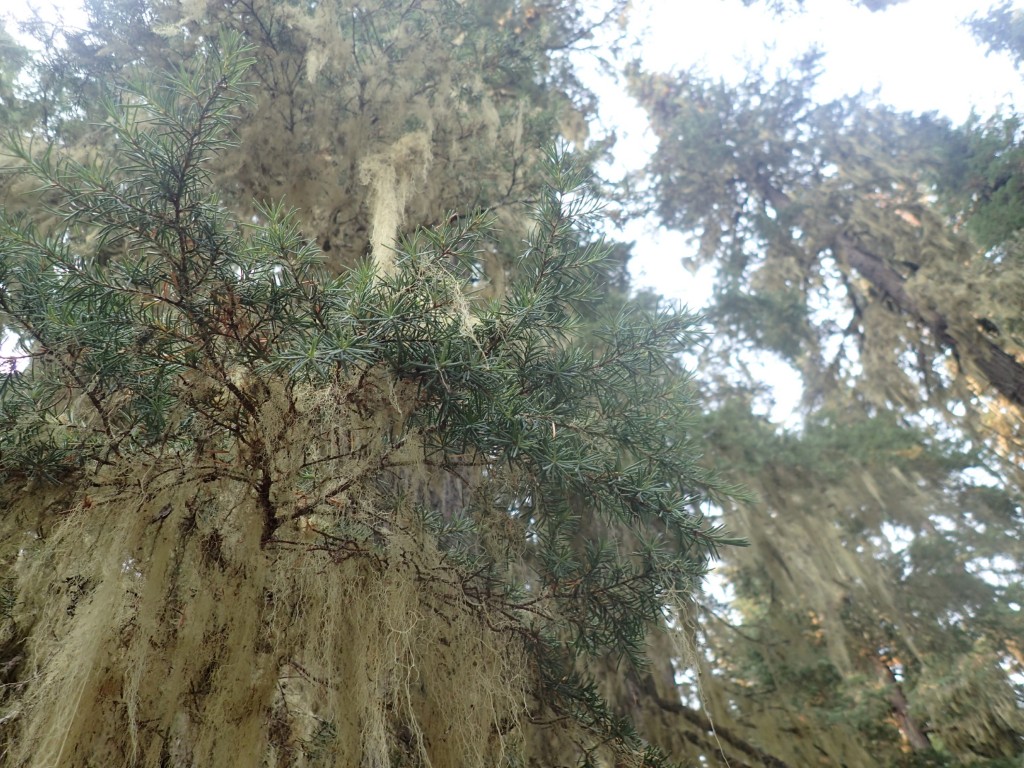

Hey, thanks for taking us along! It was a great trip alright. Congratulations on a trek well done! Hope I am able to cover some good ground when we get moved up there.